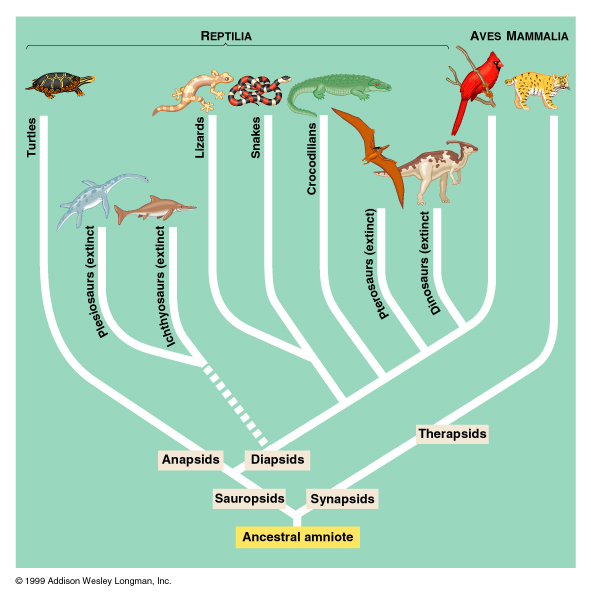Classification
Domain: Eukarya
Categorized as a member of phylum Eukarya, due to having a
nucleus and membrane bound organelles. All living organisms
currently known are members of the Eukarya domain, with Bacteria
and Archaebacteria being the only exceptions (Animal Diversity
Web, 2013).
Kingdom: Animalia
All members of this kingdom are multicellular eukaryotes, who
are also heterotrophic (rely on the consumption of other
organisms for food). Cells are typically organized into tissues
and have multiple cell layers (with the exception of the
sponges). Animals can vary greatly in size and in many other
aspects of life (Animal Diversity Web, 2013).
Phylum: Chordata
Chordates are defined by having a notochord sometime during
their life. The notochord is a rod that extends for most of the
body, and provides skeletal support in addition to also aiding
in movement. Other synapomorphies for the phylum include;
bilateral symmetry, three germ layers, ventral heart and a
complete digestive system. Most members also have bony or
cartilaginous skeletons (Animal Diversity Web, 2013).
Class: Reptilia
Class Reptillia includes turtles (Testudines), crocodiles
(Crocodilia), birds (Aves), snakes and lizards (Lepidosauria).
Reptiles have an amniotic egg, which uses the amnion to protect
the egg from hazards. All Reptiles also have horny epidermal
scales for protection. Other common traits include, lungs for
respiration, 3 or 4 chambered hearts, paired limbs with 5 toes
and internal fertilization in sexual reproduction (Animal
Diversity Web, 2013).
Order: Squamata
Order includes lizards, snakes and other Reptiles. They are
widely prevalent and diverse order, having over 7000 total
species. Loss of limbs is a common adaptation in these animals,
as the trait has evolved independently five times already.
Common traits amongst these animals include; cranial kinesis
(high degree of flexibility in cranium bones), loss of ventral
belly ribs, teeth placement, and double hooked fifth metatarsal
(similar to the heel in mammals) (UCL Museum, 2013) (Animal
Diversity Web, 2013).
Family: Phrynosomatidae
Members of the family are found throughout the continental
United States and in parts of Canada and Mexico. Members of the
family are relatively small lizards with most having a
snout-vent length of fewer than 10 cm. Common traits include,
pleurodorant teeth, sink trap nasal apparatus, the reduction of
the clavicular flange and the loss of pterygoid teeth. They
generally have small life expectancies, meaning that generations
occur rapidly, and populations are typically rather dense.
(Animal Diversity Web, 2003) (Animal Diversity Web, 2013)
Genus: Sceloporus
Members of genus Sceloporus are typically thought of as “spiny
lizards” (Nafis, 2013) (Animal Diversity Web, 2013).
Species: Sceloporus occidentalis
It can be difficult to tell the Western Fence Lizard apart from
other similar organisms in the environment. However they can be
distinguished by yellow or orange markings on the insides of
their hind limbs. Scales are also large and keeled on the
thighs of the animal. In addition, Sceloporus occidentalis has
blue coloration on its ventral side, all along the body and
neck, with this coloration being slightly less prominent in
females (Nafis, 2013) (Animal Diversity Web, 2013).
Sceloporus occidentalis literally translates to spiny
lizard of the western (occident) world. This is the Western
Fence Lizard got its name!

This tree shows the relationship of S. occidentalis within the Genus of Sceloporus (Stebbins, 1954). The relationship between the species is more of a matter of location of the organism and the apperance. This isn't the only difference between them; however, they are the main ones that can be inferred by the names.

This tree represents the class in which the Western Fence Lizrard is
within. This mainly focuses on how all the reptilia members are
closely related and what common ancestors contributed to the living
organisms today.